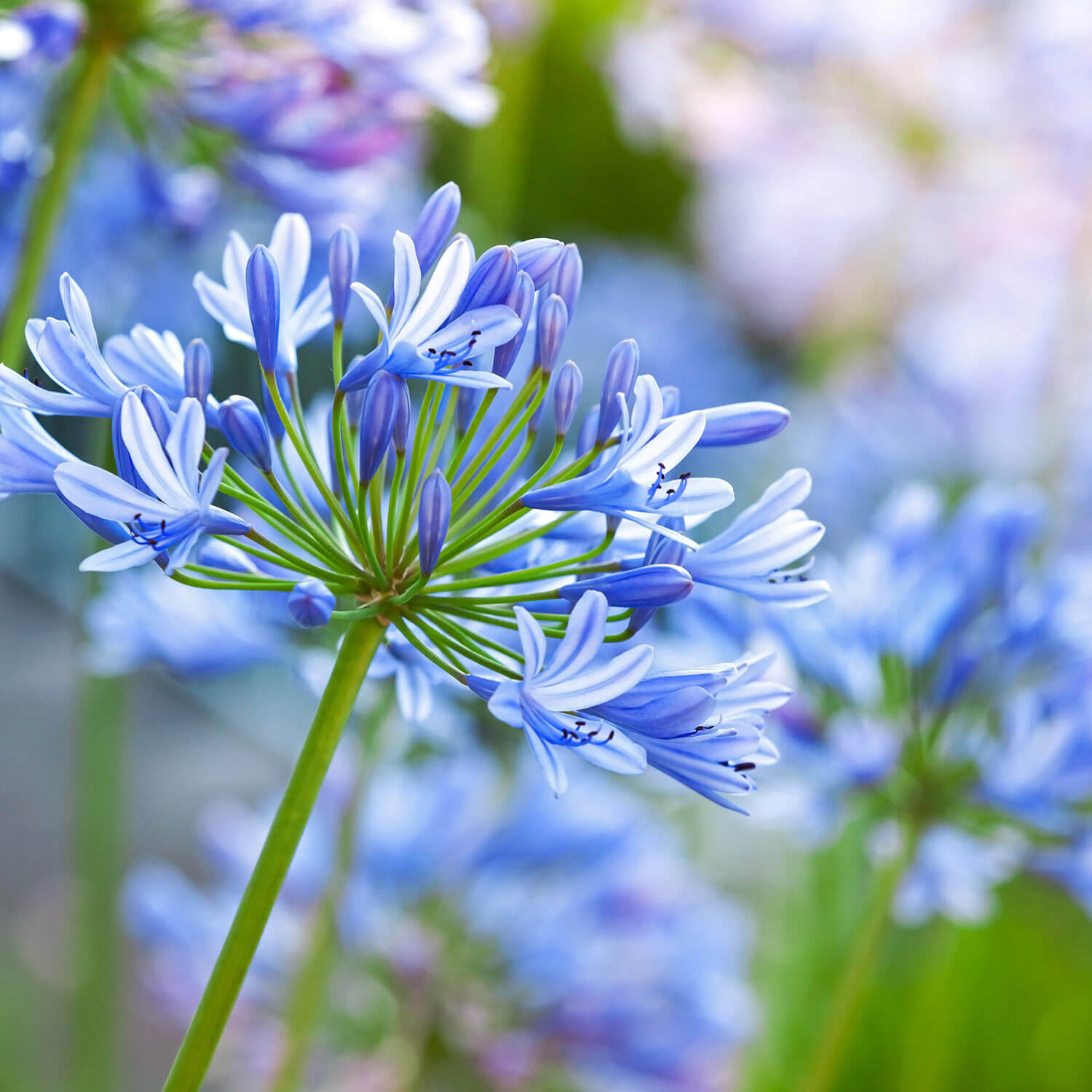Agapanthus Growing Problems: Soil, Sunshine, and Watering
Agapanthus Growing Problems: Soil, Sunshine, and Watering
Blog Article
Grasping the Art of Agapanthus Care: Vital Steps for Healthy Growth and Vibrant Flowers
In the world of horticulture, the growing of agapanthus stands as a gratifying endeavor for those who seek to nurture these sophisticated flowering plants. From picking the right range to understanding pruning strategies, the journey in the direction of growing thriving agapanthus plants is complex and holds the vital to unlocking the complete capacity of these botanical gems.

Choosing the Right Agapanthus Selection

When picking the appropriate Agapanthus range for your yard, think about elements such as environment viability, blossom shade, and development behavior. Agapanthus, frequently understood as Lily of the Nile or African lily, is available in a variety of colors varying from tones of purple and blue to white. Choose a blossom shade that matches your existing garden palette to create a harmonious landscape. Furthermore, think about the environment in your region to guarantee the Agapanthus selection you select can flourish in your specific problems. Some varieties are a lot more forgiving of cold temperature levels, while others prefer warmer environments. Comprehending the growth routine of various Agapanthus ranges is critical for appropriate positioning within your garden. Some selections have a clumping growth practice, perfect for boundaries or containers, while others have a more dispersing nature, ideal for ground cover or mass plantings. By meticulously evaluating these aspects, you can pick the ideal Agapanthus variety to boost the appeal of your yard.
Ideal Planting Conditions
Taking into consideration the optimum ecological demands is vital for effective Agapanthus cultivation. Agapanthus flourishes in well-draining soil with a somewhat acidic to neutral pH degree. When planting, select an area that receives full sunlight to partial color. In hotter environments, supplying some mid-day shade can prevent scorching of the leaves. Agapanthus plants are sensitive to cold temperatures and must be secured from frost during winter season.
To make certain healthy growth and vibrant blooms, plant Agapanthus bulbs at a deepness of regarding 2-4 inches and area them 8-12 inches apart. Adding raw material, such as compost, to the dirt can enhance water drainage and fertility, promoting durable origin growth. Mulching around the base of the plants aids preserve wetness and reduces weed growth. Regular watering is important, particularly throughout the growing period, to maintain the dirt regularly moist but not soaked.
Watering and Feeding Tips
Preserving appropriate wetness degrees and offering essential nutrients are crucial components in the treatment regimen for Agapanthus plants. When it comes to sprinkling Agapanthus, it is important to strike an equilibrium. These plants choose regularly moist soil but are vulnerable to root rot if overwatered.
Feeding Agapanthus is essential for advertising healthy and balanced development and prolific flowers. Use a balanced plant food, such as a 10-10-10 formula, in you could try here the very early springtime as new development arises. By following these watering and fertilizing pointers, you can guarantee your Agapanthus plants thrive and produce lively, lasting blooms.
Trimming Methods for Agapanthus
Trimming Agapanthus plants at the appropriate times and with proper techniques is essential for maintaining their wellness and advertising ideal growth and blooming. The optimal time to trim Agapanthus is in late winter season or early springtime prior to new development emerges.
Deadheading invested blossoms can also redirect the plant's energy into producing even more blooms instead than setting seeds. If you desire to accumulate seeds for breeding, leave some blossoms to dry and mature on the plant.
Remember to use tidy, sharp see page devices to make specific cuts and lower the risk of introducing conditions. Agapanthus. Normal trimming will certainly aid keep your Agapanthus looking healthy and neat while making sure an abundant display of beautiful blooms
Handling Common Parasites and Illness
After ensuring correct trimming strategies for Agapanthus, it is crucial to deal with typical parasites and illness that can influence the health and wellness and vigor of these plants. One common insect that impacts Agapanthus is the Agapanthus gall midget.
In addition, Agapanthus plants can suffer from origin rot if they are grown in poorly draining dirt. By being watchful and taking timely action against conditions and insects, you can help your Agapanthus plants thrive and create dynamic blooms. Agapanthus.

Conclusion
Finally, mastering the art of agapanthus treatment entails selecting the ideal variety, offering optimal planting conditions, correct watering and feeding, ideal trimming strategies, and dealing with usual parasites and illness. By following these essential actions, you can make sure healthy and balanced development and dynamic flowers for your agapanthus plants. Keep in mind to frequently keep track of and maintain your plants to promote their total wellness and durability.
To guarantee healthy growth and dynamic blooms, plant Agapanthus bulbs at a depth of regarding 2-4 inches and area them 8-12 inches apart. By following these watering and fertilizing pointers, you can official website ensure your Agapanthus plants thrive and produce dynamic, resilient blossoms.
One common pest that impacts Agapanthus is the Agapanthus gall midge. Additionally, Agapanthus plants can suffer from root rot if they are grown in poorly draining soil. By following these crucial actions, you can make certain healthy growth and dynamic blooms for your agapanthus plants.
Report this page